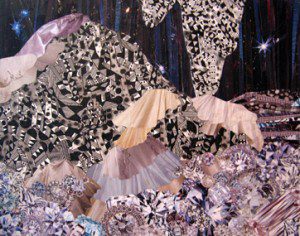
At what point does the viewer start seducing the artwork?
Oscar Wilde said that democracy is just the “bludgeoning of the people by the people for the people.” That’s funny until you actually think about it. Really, we could all use a good bludgeoning. In an era where many artistic projects over-democratize, turning viewers off with excessive game plans and inexplicable wall text (or exhibitions that “talk down” to the viewers), there is a certain solace and challenge–akin to what it would theoretically be like to read a ballot where the propositions meant what they said–in finding art that is clearly crafted and unconditionally receptive.
Hilary Pecis and Elyse Mallouk are promising young artists who make work that does this in radically different ways. They’re currently showing side-by-side at San Francisco’s Triple Base Gallery. Pecis has an involved solo show in the main room above Mallouk’s multi-channel video installation, “Trickle-down: Yours for the Mining,” in the so-called Triple Basement. But that’s where the similarity ends. Pecis’s mixed media work, some of it culled from glossy sources, captures both contemporary gluttony and a seemingly ancient spaciousness. “Intricacies of Phantom Content,” her Triple Base show, takes its name from a Baudrillard essay concerning expendable information as a stand-in for truth. Her collages seem at first to present the “dark truths” of consumerism, but the more time you spend with them, the more they summon a geological feeling of forces and ungraspable time frames. When humans start to dissolve, when the mirror of production empties, what is there to consume?
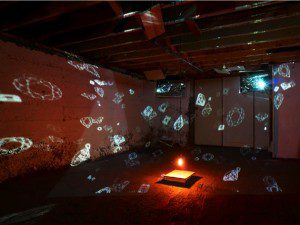 Mallouk’s work is more conceptual. For her Triple Base installation, she has filled the underground space with rotating projections of diamonds, gems that doubly or triply don’t exist: their sources are digital, they move through the space almost weightlessly, and their shapes, touched by an artist’s hands, have been “cut” by darkness instead of light. At the heart of the basement are free, hand-drawn, glistening prints of diamonds. On opening night, gallery visitors began to hold their new prints up to the light streams from the projectors, treating them less like prizes and more like personal screens. They’ve been very popular. Mallouk already had to do a second edition of prints.
Mallouk’s work is more conceptual. For her Triple Base installation, she has filled the underground space with rotating projections of diamonds, gems that doubly or triply don’t exist: their sources are digital, they move through the space almost weightlessly, and their shapes, touched by an artist’s hands, have been “cut” by darkness instead of light. At the heart of the basement are free, hand-drawn, glistening prints of diamonds. On opening night, gallery visitors began to hold their new prints up to the light streams from the projectors, treating them less like prizes and more like personal screens. They’ve been very popular. Mallouk already had to do a second edition of prints.
The original plan for this interview was to do a type of in-the-moment mail art, a visual conversation that would expand on the format of Jesse Nathan’s interview with Tucker Nichols. But it didn’t happen that way. We met at the gallery and had a good time piecing things together, cutting images and text out of Time, frieze, and other outlets, making a ramshackle collage and responding to each other visually. But the visual material kept sparking the flames of “real” conversation. The following interview is an amalgamation of visual, group, and individual interviews. Triple Base likes to do more than just sell art. Tonight, I’m giving the exhibitions’ dinner lecture, and on Sunday, there’s a closing party.
The Rumpus: Taking your aesthetic contemplations of desire seriously means asking at what point your artwork stops being seduced by you, the maker, and starts seducing you, the viewer.
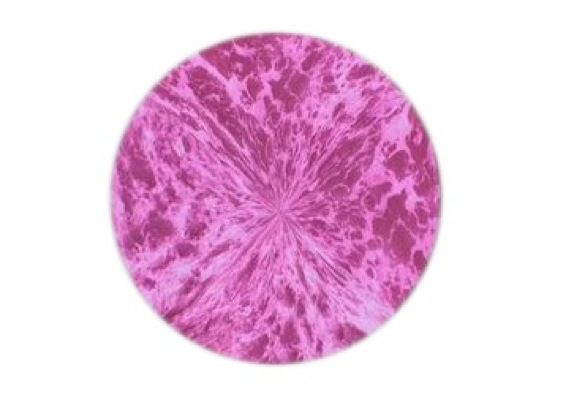 Elyse Mallouk: Yes, there’s a lot of time spent…wrangling, trying to get all these different elements to work out, especially with video. Then there’s a certain point after everything’s been installed that I can take a little bit of space from it and consider what’s working. It’s an exciting moment! It doesn’t really tell me whether it’s going to work on other people—I need to see other people in the space–but I think that it gives a hint. I like to watch how kids behave around my installations because they clearly haven’t had experience with the critical dialogue around art. Their experience shows whether the project is engaging on a pre-verbal level. At the MFA show I had a stack of “candy” posters and kids were even pretending to lick them!
Elyse Mallouk: Yes, there’s a lot of time spent…wrangling, trying to get all these different elements to work out, especially with video. Then there’s a certain point after everything’s been installed that I can take a little bit of space from it and consider what’s working. It’s an exciting moment! It doesn’t really tell me whether it’s going to work on other people—I need to see other people in the space–but I think that it gives a hint. I like to watch how kids behave around my installations because they clearly haven’t had experience with the critical dialogue around art. Their experience shows whether the project is engaging on a pre-verbal level. At the MFA show I had a stack of “candy” posters and kids were even pretending to lick them!
Rumpus: Desire for the art’s references…
Mallouk: Yes, the downstairs installation is talking in part about desire for the artwork itself.
Hilary Pecis: People are seduced by their own image.
Mallouk: I do try to seduce the viewer in my work. Does your material seduce you?
Pecis: It’s complicated, but yes.
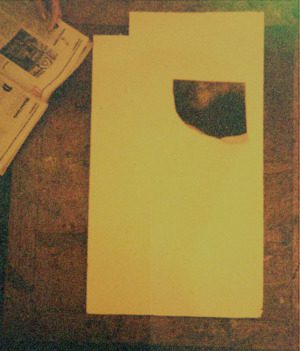 Rumpus: It seems that television and advertising have grown up together. I’m especially interested in the ’50s and ’60s, when both applications were still so consciously performative. Plus, TV still walks the line between moving images and stillness–people talk about the medium itself, size, feel, screen, placement. Advertising, from campaign ads to product placements, might have become more and more dislocated, but it has never quite become surreal.
Rumpus: It seems that television and advertising have grown up together. I’m especially interested in the ’50s and ’60s, when both applications were still so consciously performative. Plus, TV still walks the line between moving images and stillness–people talk about the medium itself, size, feel, screen, placement. Advertising, from campaign ads to product placements, might have become more and more dislocated, but it has never quite become surreal.
Mallouk: Advertising, too, has started to tailor itself to people’s responses to it. The aesthetics have to do with formal visual seduction: bright colors and glossy surfaces. Hilary takes that as a starting point.
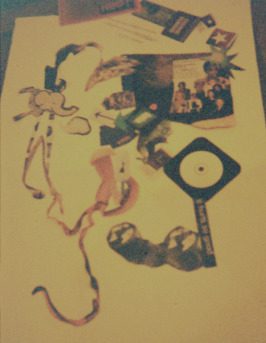 Rumpus: Advertisements for luxury goods are interesting. The products mights not be something that anyone actually needs, but they are presented as having tremendous aesthetic value: these iconic, cutting-edge whatevers will broaden the aesthetic value of your own life. It’s not so different from art sales.
Rumpus: Advertisements for luxury goods are interesting. The products mights not be something that anyone actually needs, but they are presented as having tremendous aesthetic value: these iconic, cutting-edge whatevers will broaden the aesthetic value of your own life. It’s not so different from art sales.
Mallouk: I’ve been using diamonds in particular as symbols because they resemble artworks. They are culled from raw material, polished off by human hands and made “precious” and “unique.” There’s a symbolic and sentimental value as they are passed from generation to generation because they last longer than people do.
Giving away prints is another way to question value and where it comes from. Each print is signed and editioned. You can tell which “frame” you have. Each is a “unique copy.”
Rumpus: It’s like having an animation cell.
Mallouk: Yes, I was thinking about it like an unbound flip book. It would function if you had all of the pages, but you don’t. You only have one.
Rumpus: Hilary, your work does have a panoramic, silent-cinematic quality. Do you work on multiple pieces at once?
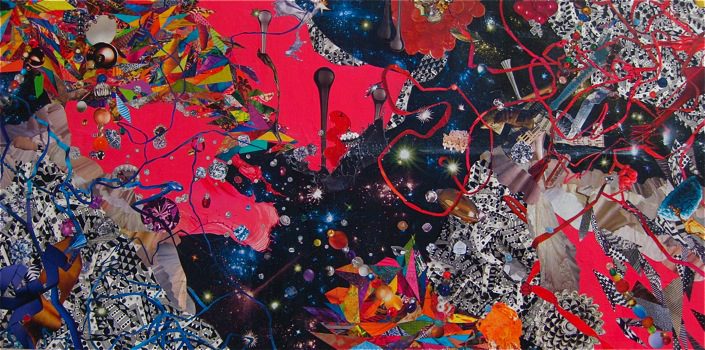
Pecis: I do. I work on pretty much everything at the same time!
Rumpus: That lends itself to a type of audience participation in the moment of your show.
Pecis: Yeah, the current work is pretty much all the same place, like a panoramic view split up into different sections. That’s where the titles come from. They’re all from the spring season or the winter season.
Rumpus: For your undergrad degree, were you already working in this type of collage?
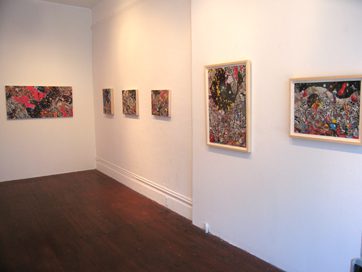 Pecis: I worked on landscapes, ink drawings. They were similar, but I was more interested in displaying information, such as striations in rocks. I think at that time they looked like depictions of information, data codes. They were similar to what I’m working on now, but there’s been a long evolution of the landscapes.
Pecis: I worked on landscapes, ink drawings. They were similar, but I was more interested in displaying information, such as striations in rocks. I think at that time they looked like depictions of information, data codes. They were similar to what I’m working on now, but there’s been a long evolution of the landscapes.
Rumpus: Has working in the Bay Area changed the way you think about landscapes, even theoretical ones? It’s such an outdoor culture.
Pecis: Oh, sure. There’s so much to look at. There’s so much visual stimulation.
Rumpus: Elyse, what were you working on pre-MFA?
Mallouk: I was painting a lot, but not working in any other media, really. I had experimented with making a video game, but it was frustrating…
Rumpus: A theoretical video game?!
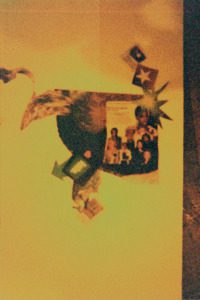 Mallouk: Yeah! It was an interactive thing where a sphere was covered with images on the inside. You could crawl through the sphere and make your own path through the images. It came out well but the process was so frustrating to me. Part of why I wanted to go back to school was to learn technical skills.
Mallouk: Yeah! It was an interactive thing where a sphere was covered with images on the inside. You could crawl through the sphere and make your own path through the images. It came out well but the process was so frustrating to me. Part of why I wanted to go back to school was to learn technical skills.
I’ve wanted to figure out ways of creating more immersive environments. At the recent MFA show I took one thing from every medium aside from painting and tried to arrange them in a way that worked like a puzzle. Each element related to another, usually with formal cues, not necessarily thematic clues. The viewer had the job of constructing a narrative out of the pieces that are there. The installation in the Triple Basement is less of a puzzle and more of a sensory saturation.
Rumpus: Hilary, your work is primarily formal or sensory.
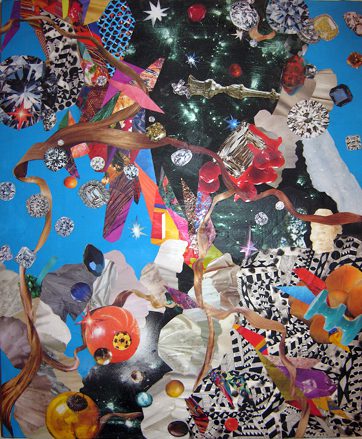 Pecis: I feel like my work is really just an assortment of images, taken from magazines and the such. They’re put out there for the viewer to make sense of in any way that they might choose. That’s the only type of participation that’s required. They’re just landscapes composed of images, taken from ot
Pecis: I feel like my work is really just an assortment of images, taken from magazines and the such. They’re put out there for the viewer to make sense of in any way that they might choose. That’s the only type of participation that’s required. They’re just landscapes composed of images, taken from ot![]() her sources.
her sources.
Rumpus: You’ve both just completed MFA degrees at CCA, but Elyse, you’re going on to do an MA in Visual and Critical Studies as well.This may not be a fair question, but is more artspeak really good for accessibility and participation?
Mallouk: Well, I’m going to try to write my thesis about what’s made contemporary art inaccessible and how certain artists are starting to provide entry points for participation. I want to be an advocate for that! Some works have a generosity that invites participation, but I’m still not sure what makes them swing one way or another.
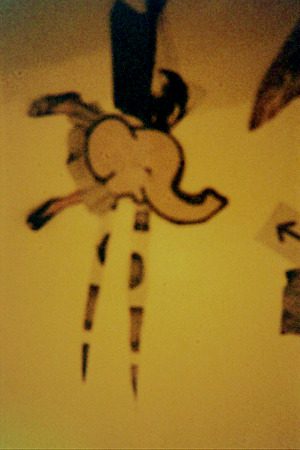 Entertainment is one thing that can make art more accessible. There’s a reason that people don’t go to gallery openings. Instead they go to the movies or watch TV. There are a couple of reasons. One is that those things are easier and a lot of people, including me, want to just zone out sometimes. But it’s also that those things are made for them, made with the viewer in mind, constantly taking the viewer’s reaction into account and tailoring the medium to it. That’s something that art hasn’t done. Art has been tailored to critical responses. Now that I’ve come through an MFA program, I can speak “artspeak” and I understand a lot more art than I used to. I was thinking about that at the Venice Biennale. It was sad that the preview days of the Biennale were packed but opening day was empty.
Entertainment is one thing that can make art more accessible. There’s a reason that people don’t go to gallery openings. Instead they go to the movies or watch TV. There are a couple of reasons. One is that those things are easier and a lot of people, including me, want to just zone out sometimes. But it’s also that those things are made for them, made with the viewer in mind, constantly taking the viewer’s reaction into account and tailoring the medium to it. That’s something that art hasn’t done. Art has been tailored to critical responses. Now that I’ve come through an MFA program, I can speak “artspeak” and I understand a lot more art than I used to. I was thinking about that at the Venice Biennale. It was sad that the preview days of the Biennale were packed but opening day was empty.

Rumpus: Hilary, you’re free from school now. Will you be staying in San Francisco?
Pecis: I don’t know. I lived in New York for a short time and would like to move back there. San Francisco is a nurturing place to work in terms of making art, though not necessarily selling it…
Rumpus: What are you working on now?
Pecis: Some animations. I’m not sure if it’s conveying what I want it to convey, but I have some time to mess around with stuff right now.
Rumpus: Has the animation work been fun, or has it been more frustrating, technically?
Pecis: A little bit of both. I think that the animation work might be more indicative of contemporary media. It’s fleeting. Images and sounds are short lived. They disappear.



